On the 24th of July 2018 the Strategic Development Committee decided to grant Poplar HARCA and Telford Homes their plans to redevelop Chrisp Street. In this piece I will outline my reservations about the application as well as further questions that need to be answered.
Tower Hamlets Today, a Rerun of Robocop?
Arguments surrounding the decision on the 24th July 2018 Strategic Development Committee seem to mirror the themes of media influence, gentrification, corruption, authoritarianism, greed, privatization, capitalism, identity, dystopia and human nature. Themes similar to Paul Verhoeven and Edward Neumeir 1987 classic, Robocop.
In Robocop, in the near future, Detroit, Michigan, is a dystopia on the verge of total collapse due to financial ruin and a high crime rate. The mayor signs a deal with the mega-corporation Omni Consumer Products (OCP), giving it complete control of the underfunded Detroit Police Department. In exchange, OCP will be allowed to turn the run-down sections of Detroit into a high-end utopia called Delta City.
Above is my letter to the Strategic Development Committee, with regards to the Chrisp Street market application
Is Poplar HARCA the New OCP and Chrisp Street the new Delta City?
Talking to residents and and stakeholders there is an impression that Poplar HARCA as an organisation seems to get an easy ride from the political class in Tower Hamlets. From the outsourcing of public services (youth services contracts), grant funding to perceived easy rides on planning applications (talking to a housing expert Poplar HARCA building of social housing is the lowest of any London Resident Social Landlords).
Chrisp Street is a good example of the uneasiness many feel of the power and influence of what is essential a private organisation, without little or no democratic accountability, has over the political class in Tower Hamlets. Power most acutely felt when Poplar HARCA raised the parking fees on its estate, where residents had no legal or political recourse to counter.
Housing activists have pointed out to me that Poplar HARCA acquired Chrisp Street for a nominal amount, and received grant money to refurbish it, questions being poised is how did we get to a situation where the entire estate is being demolished with a nominal amount of social housing gain? A nominal social housing gain through £10 million pounds of grant funding,£8 million from the GLA and £2 million from the London Borough of Tower Hamlets. An argument made more acute, when an adjacent development with no land grant nor grant funding achieved the required amount of social housing. A position which is compounded by Poplar HARCA choice in terms of the chosen development partner, Telford Homes.
Another question being poised, is the approach being used by Poplar HARCA in terms of its objectives of lifting Poplar form the top tenth percentile in the UK deprivation index. As demonstrated by the Chrisp Street Redevelopment, most of the housing gain will be in high end, one bedroom apartments, fundamentally changing the makeup of the area, therefore fitting the goal of lifting the area out of the top 10% deprived area, not through tackling actual and structural poverty but through a process of gentrification on steroids.
Why does it matter in Mile End Ward? The future of the Burdett Estate
Poplar HARCA model of regeneration, with a bias towards estate demolition is a worry on Mile End Ward. Over 20 years ago, the Burdett Estate was acquired by Poplar HARCA through a stock transfer agreement. As part of the stock transfer the estate was refurbished ‘enveloped’, with refurbishment to the external parts of the building, internally including kitchen and bathrooms. In standard construction terms, the works have a lifespan of 25 years, therefore in a few years Poplar HARCA will revisit their capital investment programme for the estate. There are alternative models of estate regeneration without demolition, that have been pioneered in London, that can be used for the Burdett.
Whither Robocop? Where do we go from here?
In the movie residents of Detroit are saved from disaster by Robocop. However in the case of Tower Hamlets, there is no Robocop just us, politicians, activists and residents. So my questions are:
How do we make sure that regeneration proposals such as Chrisp Street, achieve the maximum amount of social housing gains? London Borough of Tower Hamlets as a Joint Venture Partner, rather than Telford Homes?
How do we keep community assets such as Chrisp Street (market and retail district) in public hands?
How do we make private organisations such as Poplar HARCA, who have a material impact on a large number of residents, directly and indirectly, more democratically accountable and responsive?
Ultimately the debate surrounding Chrisp Street, the application and its approval is an indication of a failure of the democratic culture and institutions in Tower Hamlets, something which the American Philosopher, John Dewey warned us about, for democratic institutions to function properly there needs to be an accompanying democratic culture, or ‘Democracy is a habit: practice it.’ If we don’t practice democracy, then institutions and society they represent become deformed, as is the case in Tower Hamlets.
The Chrisp Street development points towards a future of a two borough society, a gentrified and an ungentrified part, a twin society of gated luxury apartments and deprived open housing estates , a twin borough dominated by the haves over the have nots. But as in the movie Robocop, things can be stopped and reversed, its not too late…
Above is a video of the ‘State of the Borough’ speech given by Cllr Ehtesham Haque of Blackwall and Cubitt Town, the current status of Tower Hamlets and its current trajectory, with massive inqualities, as a two state Borough.



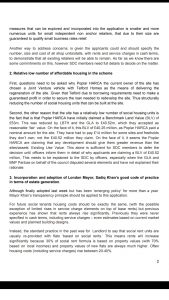
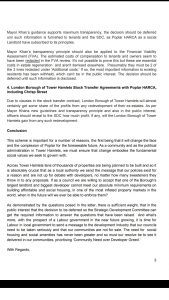

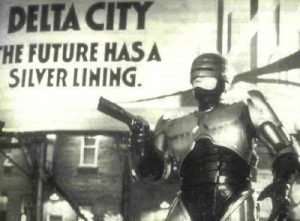

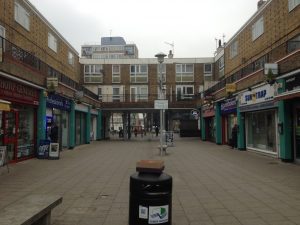
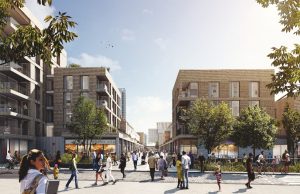
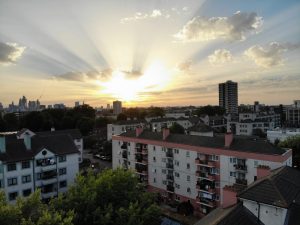
Recent Comments